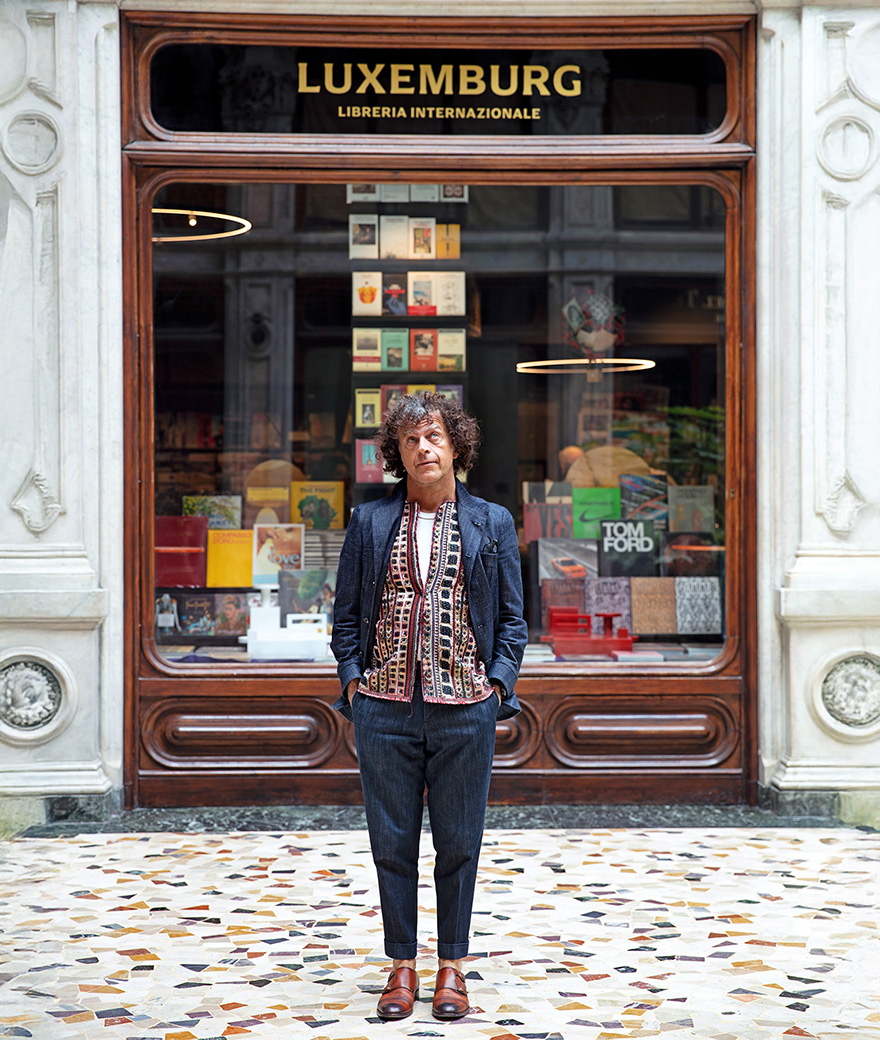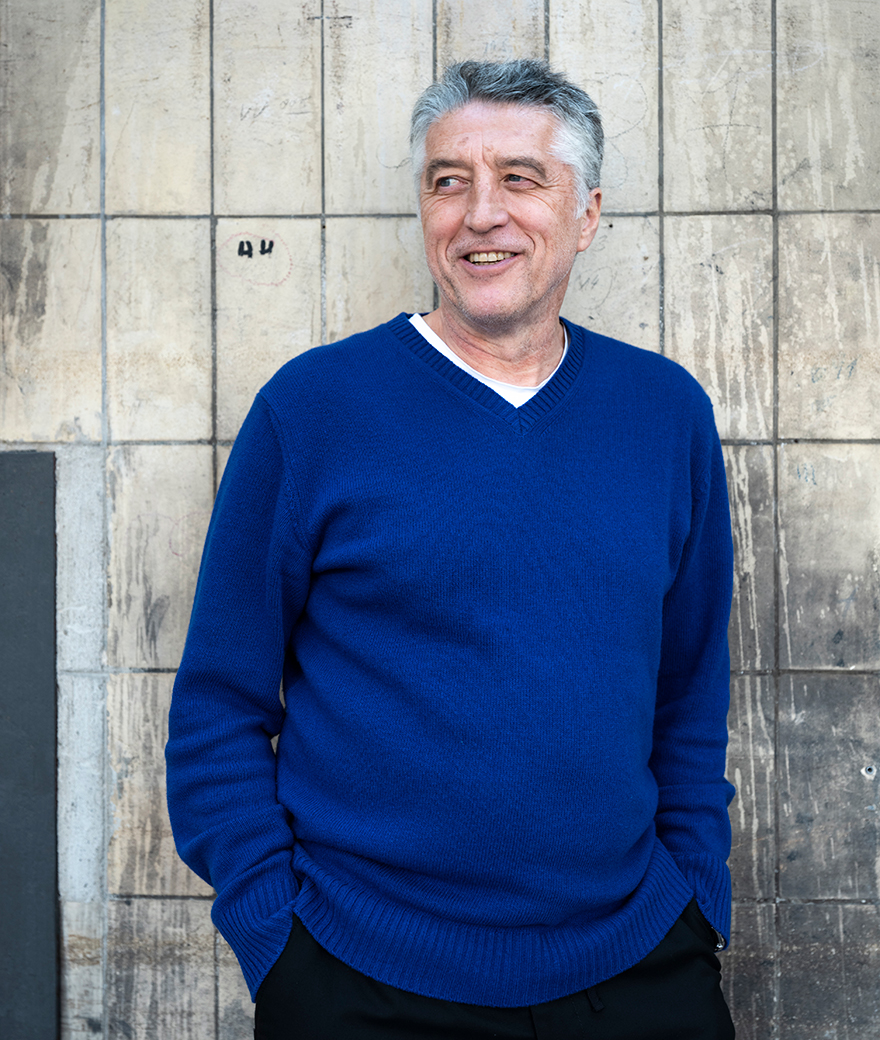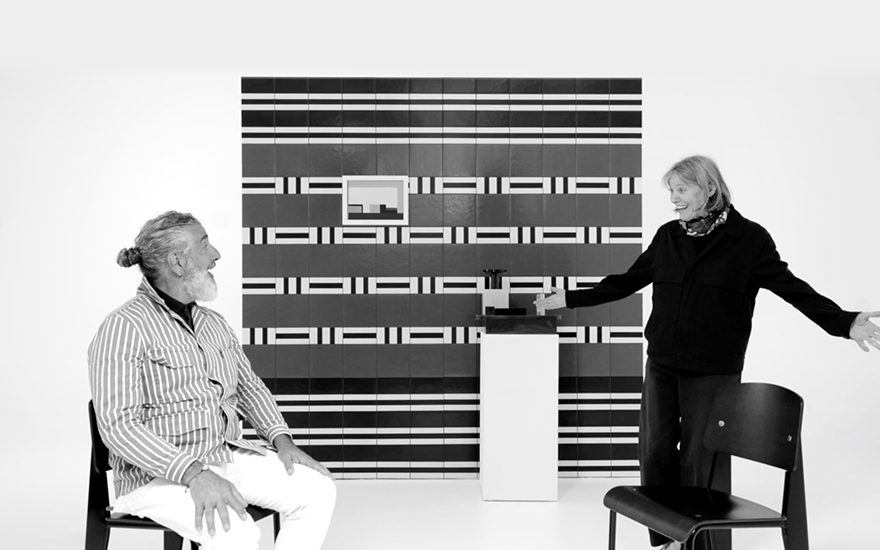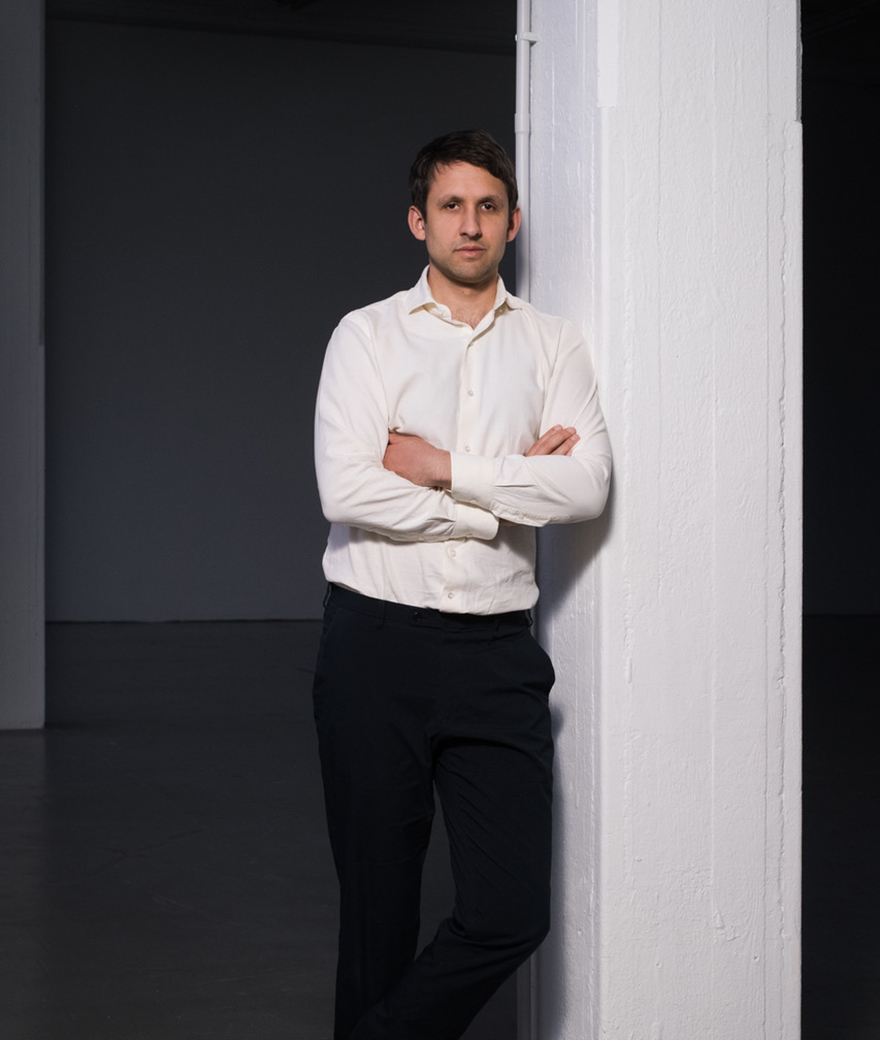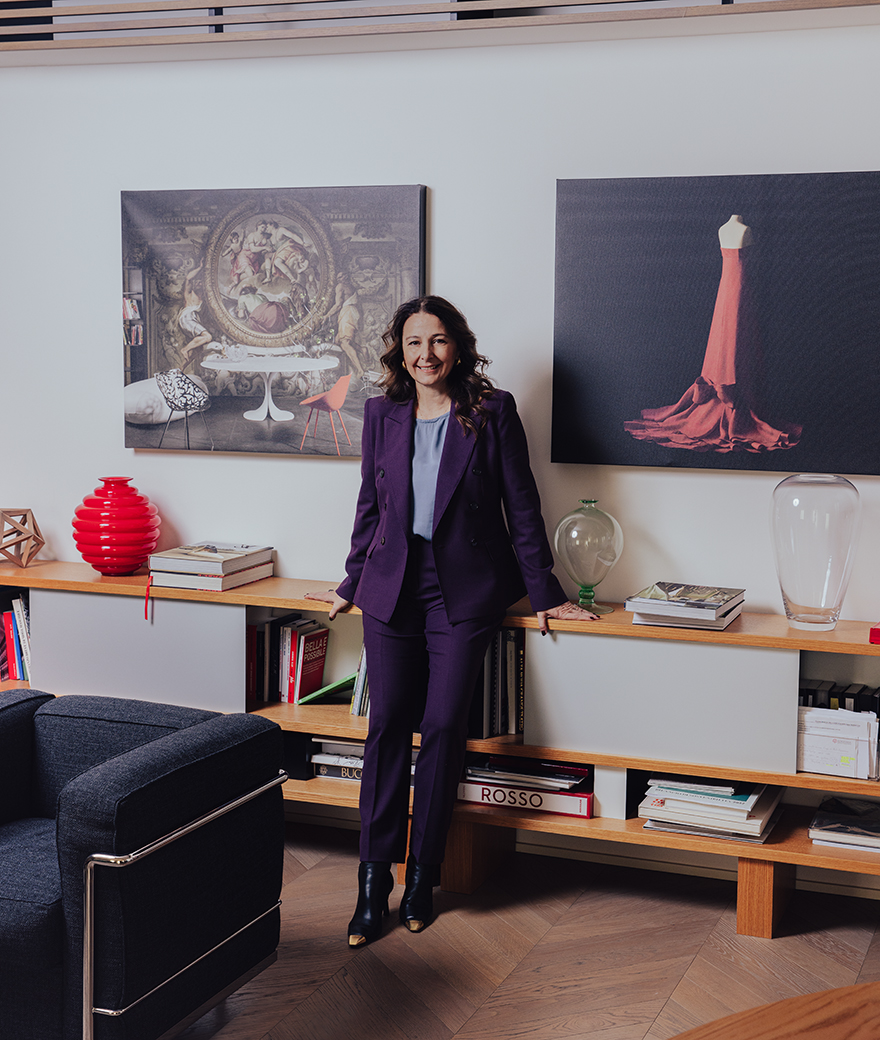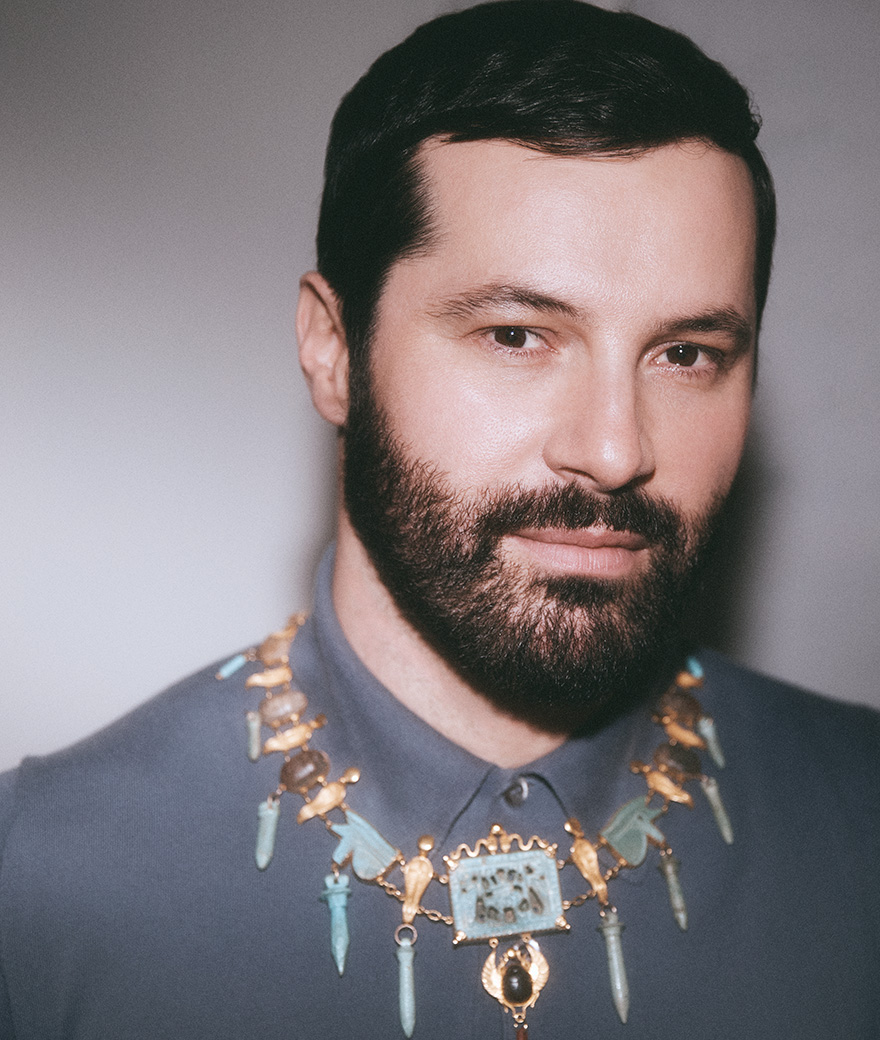We are pleased to announce that Michael Anastassiades joined the Mutina team, with a brand new ceramic collection that will be presented during Milano Design Week 2023.
A talk with Michael Anastassiades
We are pleased to announce that Michael Anastassiades joined the Mutina team, with a brand new ceramic collection that will be presented during Milano Design Week 2023.
Designer of Cypriot origins, Michael Anastassiades founded his own studio in London in 1994, after a degree in civil engineering and a master in industrial design. His practice encompasses product, spatial interventions and experimental works, often transcending the distinctions between different fields of creativity. His approach to materials is founded on an honest communication of their inherent qualities – a quality aligned with Mutina’s core research.
Anastassiades created furnishings, lighting and decorative objects of a timeless vocabulary, instilled by formal and poetic references from Cyprus, the history of Modernism, everyday life, personal memories and art.
We are celebrating his brand new collaboration for Mutina with a conversation, speaking about his personal approach and relation with ceramic as a material, as a preview of the collection he designed for Mutina.
How would you describe your path in the design field?
I became interested in design after my civil engineer studies, when I decided Engineering wasn’t something I wanted to pursue. I knew what I didn’t like but, at the same time, I didn’t know what I liked. I started to think that design was something I could have explored, but it was a big unknown right from the beginning. I think it still is, somehow.
At the beginning, I was very interested in the role of electronic objects, with a particular focus on how they were defining our life and space. Mobile phones, new ways of communications, text messaging… were new at that time and interactivity was something I was completely fascinated by. I wanted to explore it, so I started looking at design as a tool for research. I was raising questions more than writing answers.
It was almost 15 or 20 years later that I started questioning my role as a designer and my relationship with industrial production. I think it was an interesting shift and that’s what I am still exploring today.
What do you like the most about your practice?
I like the unpredictability of what’s around the corner. If I look at my career in design, it has always been very unexpected. I discovered a lot of things by trying them out, then realising I didn’t want to do them. I also wanted to redefine the things that I liked. It’s been a constant expansion and, at the same time, a narrowing down process. This is how I describe my practice.
In your opinion, what makes an object timeless?
First, it is about distilling the visual language of the product and reducing the information that it carries. It’s almost like the object would stop to exist if you were to remove one more layer of information. This process makes the product and the message it carries stronger, giving it the capacity to withstand time.
Another quality that can contribute to timelessness is familiarity. In Design, people often like to shock by introducing something different and unexpected, claiming fame for the introduction of a new idea. But all ideas have existed in the past and have reappeared in slightly different ways throughout history. I don’t think that anybody has the right to claim ownership of a “new” idea. There is nothing wrong with familiarity. People feel comfortable with something they can already have a dialogue.
Moving on to your collaboration with Mutina, you designed a new collection which will be presented at Milano Design Week: Fringe. Was it your first time working with a ceramic surface?
It was. I’ve always been super fan of the material, but it’s my first time working with a ceramic surface.
How would you describe your approach to such a primordial material as ceramics?
It’s a game. I’ve never been able to explore ceramics before, but my design philosophy is very much structured on materials and their honest communication: I want metals to be metals and woods to be woods… so it was really exciting to have this opportunity. A physical encounter with a large surface is something overwhelming. It is very exciting.
How was it working on this new project with Mutina? How did you first get in touch with the company and how did it develop?
We met informally under different circumstances, without immediately thinking or talking about the project. It was more of an understanding what Mutina is as a brand and my potential contribution. It took a couple of years before we actually thought it was the right time to do something together. It was better this way. It was during Covid that they asked me to come up with an idea and that’s when I started working on a proposal.
With Mutina, it’s all about relationships. The collection usually comes along with a lot of work, dialogue and mutual exchange. How did Fringe develop?
In our case, it was a little different. It happened in a very organic way. When I met Massimo and Giuliana, we expressed an interest to work together, but we did not define when or how. One day, I brought out a reference of something I liked and we both realised that it had an enormous potential to become a Mutina collection. From there, everything evolved in a very organic way.
Can you give us a little anticipation about Fringe? What’s the essence of the collection?
The essence is the creativity of where and how it will be used, because there are endless possibilities in interpreting the collection. The beauty of Fringe is that it can exist in so many different ways, allowing the user to be creative. What we will show at Milano Design Week is just a small part of it: triggering people’s imagination and curiousity is the starting point.
“We met informally under different circumstances, without immediately thinking or talking about the project. It was more of an understanding what Mutina is as a brand and my potential contribution. It took a couple of years before we actually thought it was the right time to do something together. It was better this way.”

